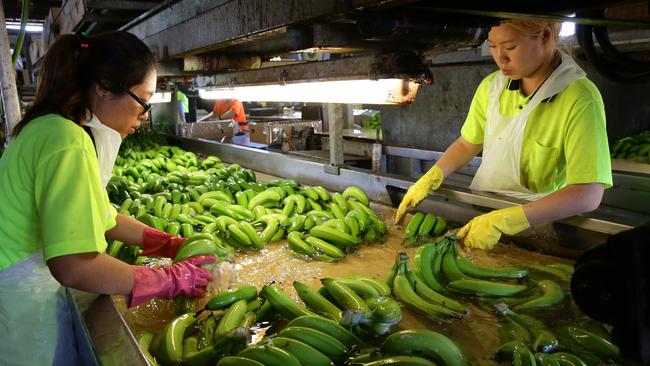Hi-tech laboratory leads race to halt ‘bananageddon’
After ravaging plantations across Asia, Panama Disease has made landfall in the New World.

That the catastrophe was anticipated did not make its arrival any the less upsetting. “We knew this day would come,” Gilad Gershon said, speaking from Britain’s most hi-tech banana laboratory. “But the fact it has really happened is a shock.”
Earlier this week Colombia confirmed that its bananas were infected with a killer fungus. After ravaging plantations across Asia, Panama Disease has officially made landfall in the New World.
We know what will happen next. Slowly, but unstoppably, the fungus will spread through the last uninfected banana crops, colonising a continent that — in part because everywhere else is ravaged — is now the biggest commercial grower.
The fruit will not evolve resistance, because it cannot evolve. Then, when the last banana in the last field is infected, bananageddon, long predicted, will have arrived.
If there is any hope, it may lie in the laboratory of Tropic Biosciences, Mr Gershon’s company. Here, in a measuring jug, are thousands of microscopic banana embryos, awaiting maturation. All have been genetically edited to — their creators hope — be resistant to the fungus. When they leave the measuring jug and enter the greenhouse, in about a year, we will find out.
The stakes could barely be higher. About 100 billion bananas are eaten each year, constituting 75 per cent of the tropical fruit trade. Across much of the planet the first solids experienced by a baby are bananas. As a nutritious food that can be eaten without teeth, all too often it is our last solid food, too.
The fruit has a terrible flaw, though. The commercial version does not reproduce sexually.
Almost all the cultivated bananas in the world are the Cavendish strain.
All of those are cuttings, clones of each other. Without the genetic diversity that comes with sexual reproduction, they have no defence against disease. Now this one disease threatens to bring their commercial extinction. The banana will survive, but the cost of growing it at scale could become prohibitive.
[The Australian Department of Agriculture says there are several races of Panama disease in Australia. One race, known as Tropical Race 4, infects Cavendish bananas, Australia’s most grown variety of banana, as well as most other varieties. It has been estimated that 80 per cent of global production is under threat from Tropical Race 4. If the disease were to spread beyond its current Australian distribution in Queensland and the Northern Territory, it would devastate Australia’s banana industry. The fungus attacks the banana’s vascular system, causing wilting and death of the infected plant.]
Dan Bebber, from the University of Exeter, is part of a research group set up because of the threat. He said that attempts to stop Panama Disease, which has been around since the 1990s, have had little effect.
“Once spores are in the soil it gets very deep,” Dr Bebber said. “It can hang around and wait. It’s a big problem. I was in Colombia a few years ago. They were likening it to the arrival of a hurricane. It’s utterly devastating.”
Mr Gershon, whose Norwich-based company employs 40 scientists, said that the normal approaches to defeating disease don’t work with bananas.
“If you are a wheat farmer, and you have a new disease, you go and look through the thousands of varieties of wheat, and you kind of start picking and choosing,” he said.
“You say, ‘I’ll take the wheat that is resistant to disease, and the one that has a higher yield.’ And you’ll end up with something that really fits your needs. In the banana though we only have one variety.”
Some researchers are looking to wild varieties and trying to develop them. That is tough.
“They are going to the forefathers of the bananas and trying to create something like the Cavendish,” he said. “Think about trying to take a sabre-toothed wolf from 10,000 years ago and trying to breed it into a chihuahua.”
That is why he thinks genetic engineering may be the only way to save the crop. If not, he said, “Panama Disease in America could be the coup de gras.”
If it sounds unthinkable that a fruit as ubiquitous as the banana could disappear as a crop, it is worth remembering that it has happened before.
Until the 1950s the main variety of banana grown in the world was the Gros Michel. Starting in the early 20th century, it began to succumb to a different strain of Panama Disease — leading to a shortage that inspired a song whose resonance might yet return: Yes! We Have No Bananas.
The Times



To join the conversation, please log in. Don't have an account? Register
Join the conversation, you are commenting as Logout